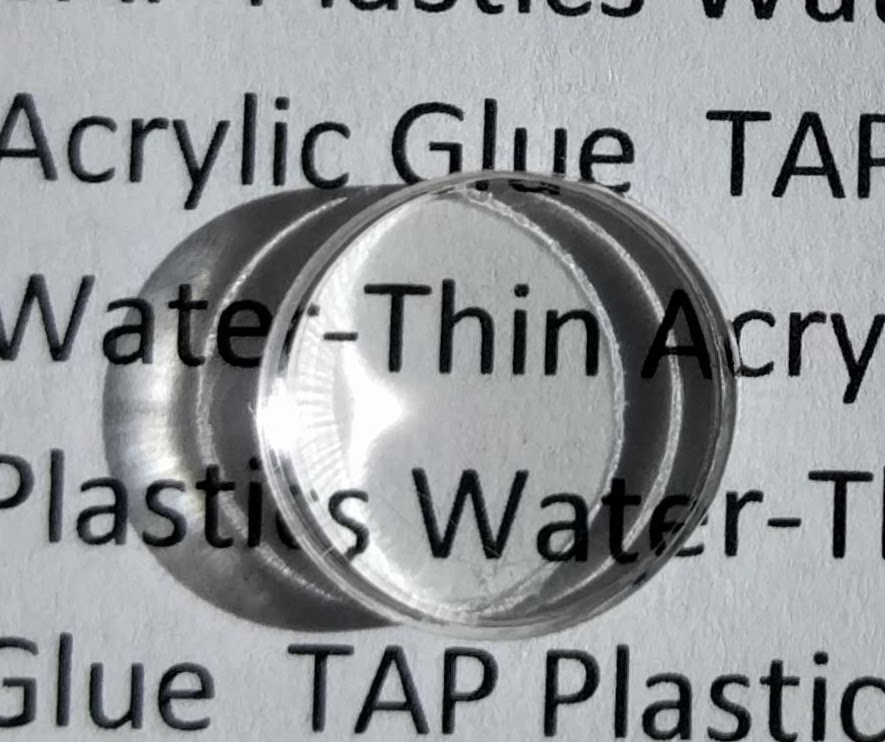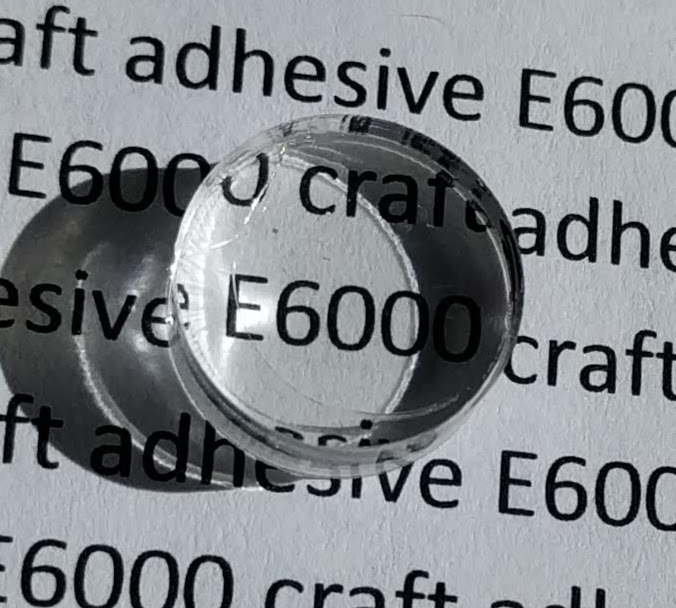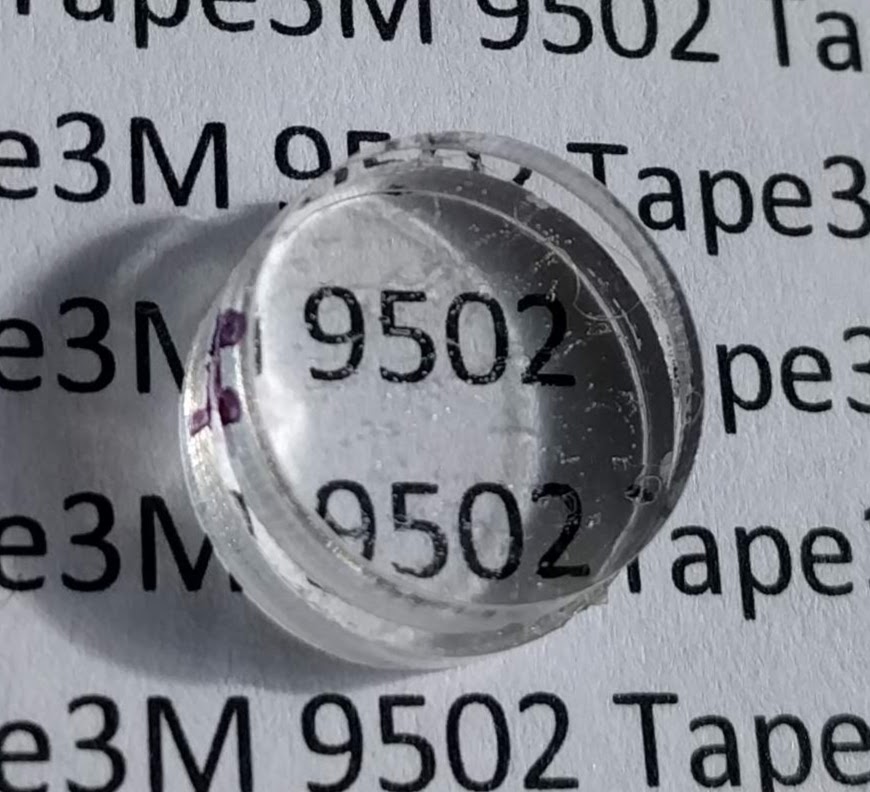What’s the best way to stick clear acrylic together with a nice, optically clear bond? I tried out the adhesives I had on hand. If you can post any others, please do!
My test objects are pairs of 0.5" circles of Medium Clear Acrylic Proofgrade. These extreme closeups probably make everything look worse than it is.
Water-Thin Acrylic Cement
This looks great, you can’t even see the edges of the adhesive drop. However, it is hard to work with. You need to practice wicking it into the seams, and you need to take great care not to dribble any on surfaces that you want to remain pristine.
Gap-Filling Acrylic Gel Cement (SciGrip 16)
This stuff looked great when I first applied it, but very quickly it took on this curdled appearance. Maybe it all would have been better if I kept it clamped. This was a pretty lazy application though, because I am hoping to find the right product for the lazy builder.
Note that this gel cement leaves strings behind when you dispense it, so you need to be careful that they don’t land on unprotected plastic.
E6000 Craft Adhesive
This looks great, and there’s no curdling at the edges of the droplet, though the seam is still obvious. This adhesive does like to leave strings behind when you dispense, so it takes some care to use.
If you view this object with a bright backlight, you can see that the adhesive has a very subtle haze. This test image is very favorable, but if you had an uneven application on something like a brightly lit mock stained glass , it would probably be noticeable.
(E6000 sticks to everything I have tried so far, including slippery rare earth magnets, and has become one of my favorite adhesives.)
3M 9502 Tape
This 2-sides tape is extremely thin and laser cuts easily, with a perfect edge. When I put it on acrylic, I don’t even have to adjust my cut settings. The bond is pretty clear, but also obvisouly speckled. The speckles are pretty obvious when the object is backlit, even at arm’s length.
This stuff is absolutely the bee’s knees for assembling opaque acrylic signage, though. Unfortunately, it is also pretty expensive!
Thoughts
Even the worst of these candidates might be OK for small parts that won’t be closely examined, or larger parts in favorable lighting. For example, a clear piece on a lighter opaque piece might pass if the whitish artifacts blended in to the background.
If I wanted to stack clear parts on clear parts with the best optical quality, my first try would be to use a few dots of E6000. If that wasn’t satisfactory, I would try the much harder to use water-thin cement.




